The U.S. Flag's historical and symbolic significance is explored from its inception in 1777 to the present, reflecting the United States' evolution and diversity through its 50-star design. Each star and stripe addition marks the entry of a new state into the Union, making it a living chronicle of American history. The flag serves as a tangible link to America's past, a symbol of national identity uniting citizens and visitors, and is integral to societal cohesion. Its presence in ceremonial contexts, such as Memorial Day and Independence Day, showcases its role during pivotal historical moments, from the Battle of New Orleans to the Civil Rights Movement. The flag's rich past and ongoing journey toward liberty and justice for all can be experienced through visiting preservation sites and museums, including the Smithsonian Institution and local historical societies like Philadelphia's Independence National Historical Park. Proper etiquette when displaying the U.S. Flag near you is essential to honoring its symbolism, with guidelines on how to respectfully handle and showcase this emblem of national pride, which embodies the values that define America. For those wishing to acquire an authentic flag, resources such as local government offices, veterans' groups, and reputable online sources are available. Engaging with the U.S. Flag near you offers a profound connection to America's legacy and evolving narrative, making it an enriching experience for understanding its deeper significance.
Explore the enduring symbolism of the U.S. Flag, woven through the tapestry of American history. This article traverses the evolution of the Stars and Stripes, from its inception to the present day, highlighting iconic flags that marked pivotal moments such as the Battle of New Orleans and the Civil Rights Movement. Discover how and where to engage with these emblems of our nation’s heritage at preservation sites and museums across the country. Learn the etiquette and respectful ways to display the U.S. Flag near you in ceremonial contexts, from Memorial Day to Independence Day, and beyond. Whether for remembrance or celebration, understanding the flag’s significance and proper handling is a cornerstone of American culture.
- The Evolution of the Stars and Stripes: A Historical Journey of the U.S. Flag
- Iconic Flags of Pivotal Moments: From the Battle of New Orleans to the Civil Rights Movement
- Where to Find and Experience the U.S. Flag near Me: Preservation Sites and Museums Across the Nation
- The Significance of the U.S. Flag in Ceremonial Contexts: Memorial Day, Independence Day, and Beyond
- Collecting and Displaying the U.S. Flag with Respect: A Guide to Proper Handling and Etiquette
The Evolution of the Stars and Stripes: A Historical Journey of the U.S. Flag

The Stars and Stripes, a symbol of American freedom and unity, has undergone significant changes over its storied history, reflecting the nation’s evolution and diversity. From its inception under the First Flag Act in 1777, which established a standardized design with 13 stars and 13 stripes to represent the original colonies, the U.S. Flag has been a living chronicle of the country’s growth. As new states joined the Union, so too did the flag expand: 2 stars and a stripe for each addition until it reached its current 50-star configuration following Hawaii’s statehood in 1959. Each iteration of the flag has been a testament to the nation’s commitment to inclusivity and representation, a theme that continues to resonate today. The U.S. Flag near me serves as both a historical artifact and a vibrant symbol of national identity, reminding citizens and visitors alike of the shared heritage and values that unite them. Whether for ceremonial purposes, personal display, or educational reflection, the flag remains an integral part of American life, inviting all to reflect on its history and their own connection to this enduring emblem.
Iconic Flags of Pivotal Moments: From the Battle of New Orleans to the Civil Rights Movement

The American flag has served as a potent symbol throughout significant epochs in the United States’ history, capturing the essence of pivotal moments that have shaped the nation’s identity. One such moment is the Battle of New Orleans in 1815, where U.S. forces under Andrew Jackson achieved a decisive victory against British troops. The flag that flew during this conflict was largely based on the design we recognize today, with thirteen stars and fifteen stripes, reflecting the states in the Union at the time. This battle, which occurred after the war had officially ended, became a symbol of American resilience and determination. Today, individuals across the country can easily locate an authentic U.S. Flag near them to pay homage to this and other historical events that the flag has represented.
Fast forward nearly a century and a half later, the flag was once again at the center of a transformative period in American history during the Civil Rights Movement. The 1960s were marked by courageous struggles for equality and justice, with the flag sometimes serving as both a rallying point and a target for debate over whose rights it truly represented. Iconic images from this era show the flag waving behind leaders like Martin Luther King Jr., as they delivered impassioned speeches calling for change. The flag, in these moments, became a banner of hope and a reminder of the ongoing pursuit of liberty and justice for all. For those looking to honor the legacy of the Civil Rights Movement, finding a U.S. Flag near them is a tangible way to connect with this critical chapter in American history.
Where to Find and Experience the U.S. Flag near Me: Preservation Sites and Museums Across the Nation

The United States Flag is a symbol of national pride, history, and identity that has witnessed key moments in American history. For those wishing to connect with this emblematic banner and its storied past, there are numerous preservation sites and museums across the nation where one can encounter the U.S. Flag near you in various forms and contexts. The Smithsonian Institution’s National Museum of American History in Washington, D.C., houses a vast collection of flags, including the Star-Spangled Banner that inspired the national anthem. Similarly, the Flag Heritage Foundation in Wisconsin showcases a comprehensive range of flags and flag-related artifacts. State historical societies also offer insights into local flag history, such as the site where the first official U.S. flag was made in 1776, which can be found in Philadelphia’s Independence National Historical Park. The U.S. Flag near me is not just a relic of the past but a living symbol that continues to be revered and displayed across communities. To experience the significance of the U.S. Flag in real-time, one can attend flag-raising ceremonies, parades, or visit local government buildings where the flag is proudly displayed. These experiences not only pay homage to the history of the U.S. Flag but also reinforce its meaning in contemporary society. Whether it’s through a visit to a dedicated museum or an encounter with a flag at a community event, exploring the U.S. Flag near you offers a profound connection to America’s heritage and ongoing narrative.
The Significance of the U.S. Flag in Ceremonial Contexts: Memorial Day, Independence Day, and Beyond

The U.S. Flag serves as a powerful symbol within the ceremonial contexts of Memorial Day and Independence Day, among other significant national observances. On Memorial Day, the flag is flown at half-staff to honor the military personnel who have died in the service of their country. This act of remembrance is a poignant reminder of the sacrifices made by these individuals, and the flag becomes a visual representation of gratitude and mourning. The U.S. Flag near me can be found adorning countless homes, public buildings, and national cemeteries, each one flying at half-mast, creating an atmosphere of solemnity and reflection.
Independence Day marks a stark contrast, with the flag rising to its full height, symbolizing the resilience, courage, and independence of the nation. On this day, the U.S. Flag near me is often the centerpiece of community parades, fireworks displays, and backyard gatherings. It represents the collective pride in the United States’ history, achievements, and the democratic ideals upon which it was founded. The flag’s presence is a unifying force that binds together individuals from diverse backgrounds in a shared expression of national identity and patriotism. Throughout these ceremonial occasions, the U.S. Flag near me transcends its physical form, becoming a living testament to the country’s journey and a beacon of unity for all who witness it.
Collecting and Displaying the U.S. Flag with Respect: A Guide to Proper Handling and Etiquette

The U.S. Flag holds a revered place in American culture and history, symbolizing the nation’s values and ideals. When collecting and displaying the flag, adherence to proper etiquette is paramount. It is not merely about owning a piece of cloth; it’s about honoring the legacy and spirit that each stripe and star represent. Whether you’re seeking to acquire a U.S. Flag near you or are an existing collector, understanding the guidelines for handling and displaying the flag ensures respect for its significance.
Displaying the flag should be done with care and in accordance with established protocols. The flag should be flown at the peak of any staff it’s hoisted on, if present. When displayed vertically or horizontally against a wall, the union (the blue field with stars) should be placed uppermost and to the flag’s own right. The flag should never be used as a covering for objects, nor should it be permitted to touch the ground. In homes, it may be displayed 24 hours a day, though some choose to display it from sunrise to sunset. If the flag becomes tattered or worn, it must be retired with dignity, preferably by burning it in a dignified, respectful ceremony. Remembering that the flag represents all Americans, its proper handling and display are acts of patriotism and reverence for those who have defended the nation’s freedoms. For those interested in acquiring a U.S. Flag near them, local government offices, veterans’ organizations, or reputable online sources can provide authentic flags and guidance on their proper care.
